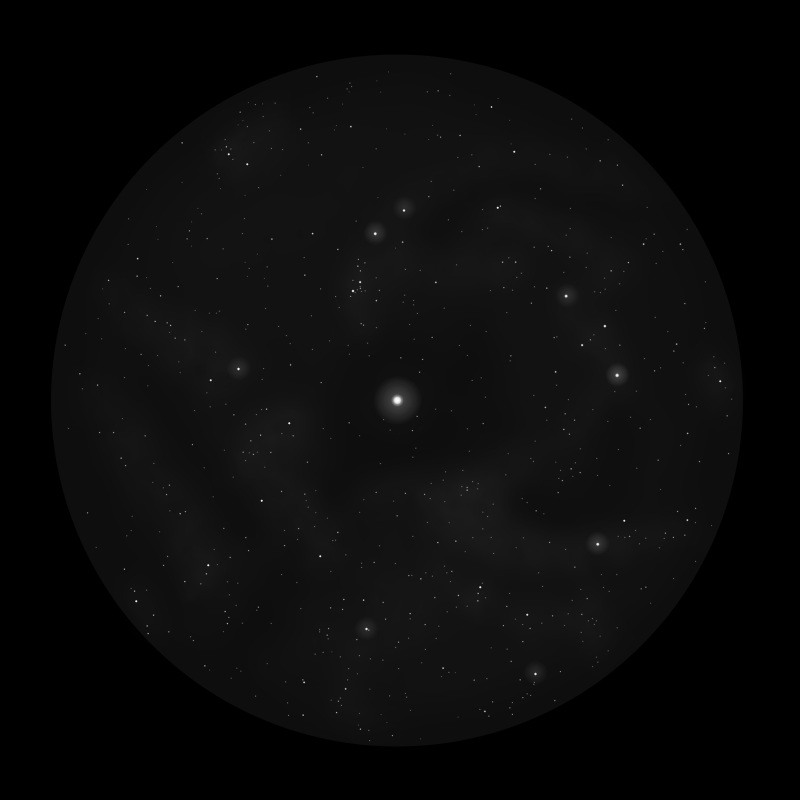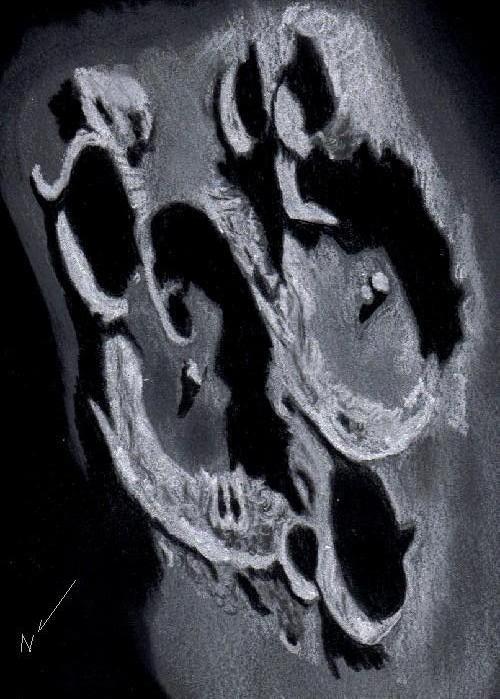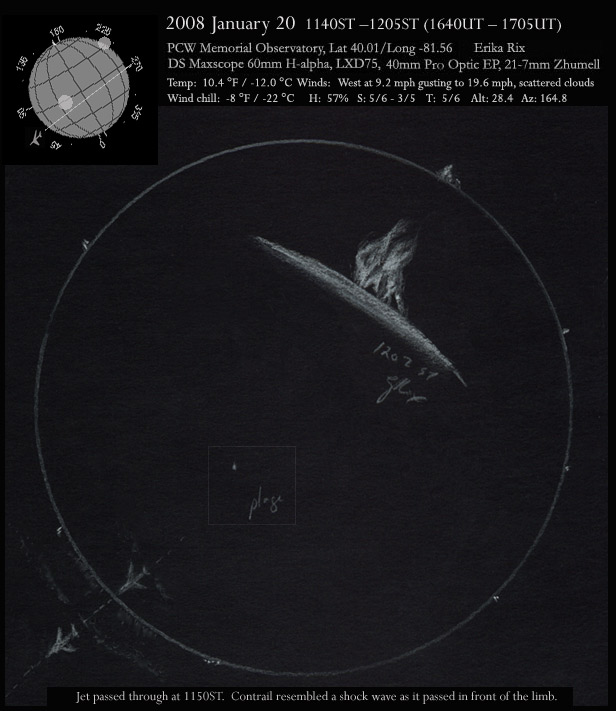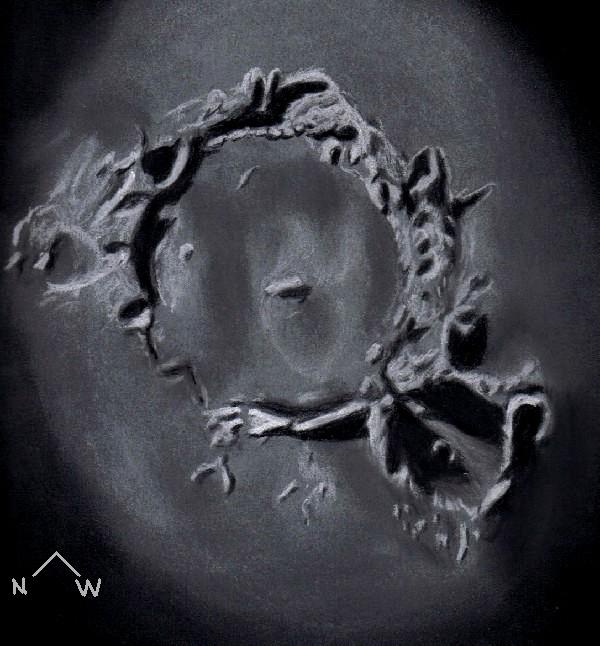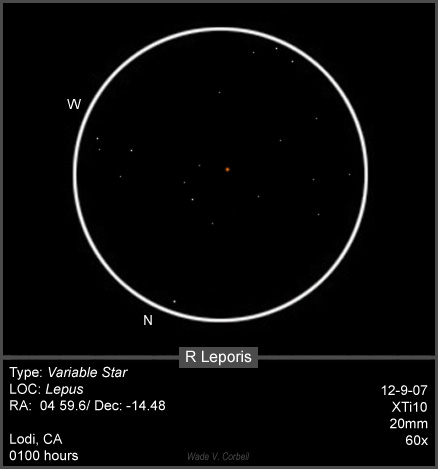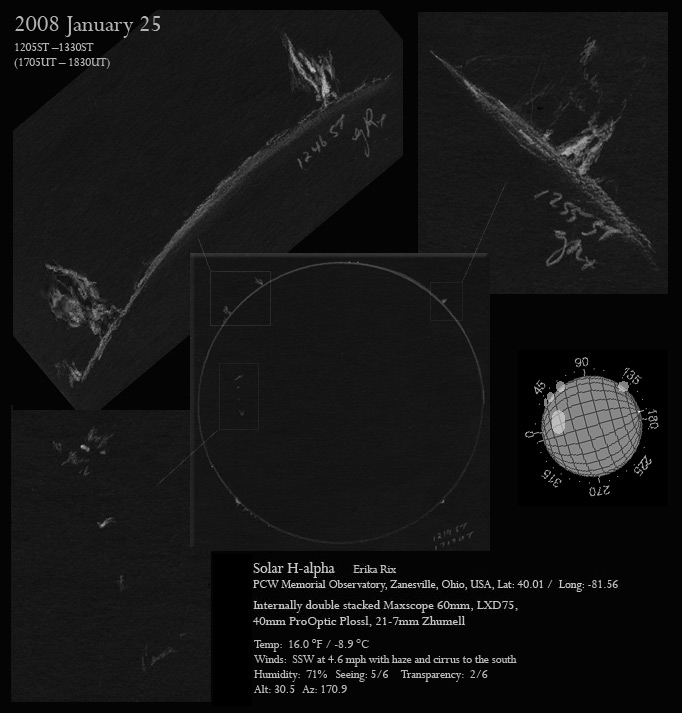
Solar H-alpha 2008 01 25,
1205ST -1330ST (1705UT – 1830UT)
By Erika Rix
2008 01 25, 1205ST -1330ST (1705UT – 1830UT)
Solar H-alpha
PCW Memorial Observatory, Zanesville, Ohio, USA, Lat: 40.01 / Long: -81.56
Erika Rix
Temp: 16.0 °F / -8.9 °C
Winds: SSW at 4.6 mph
Humidity: 71%
Seeing: 5/6
Transparency: 2/6
Alt: 30.5 Az: 170.9
Equipment:
Internally double stacked Maxscope 60mm, LXD75, 40mm ProOptic Plossl, 21-7mm
Zhumell, ETX70-AT with 8mm TV Plossl for white light observation.
Sketch Media:
Black Strathmore Artagain paper, white Conte’ and Prang pencils, white vinyl eraser.
Added -25 brightness, +5 contrast after scanning in color at 300 dpi. I then turned
the image into monochrome. I scanned initially in color to eliminate cross hashes
that the scanner creates in grayscale. Tilting Sun program used for digital Sun
insert.
The NE and the SE limbs are still at it. Snows and overcast prevented me from
viewing yesterday, but on the 23rd of January, two proms on the NE limb were spread
out a little further from each other and the one that was around 55 degrees PA had
two very bright upright legs to it with a faint line of connection in between them.
Today, there is a very tall fainter prominence around 45-50 deg PA that looks like
two hands pressing against each other with a small prominence just north of it by
about 2-3 degrees. Then around 55-60 degrees PA (maybe even a little more distance
than that) was a brighter prominence defined by a very bright tall slender arm on
the northern side of it with a few shorter slender arms jetting out to the southern
portion. The base of the main southern portion was about twice as thick as the
northern arm.
To the SE around 135 degrees was a very bright cone shaped prominence about half as
tall as the two proms on the NE limb. The inside of the cone appeared hollow.
Bumping up magnification, and adjusting the T-max, I noticed a small, round, faint
cloud just to the south of it, reaching up above by about half its height. I
lowered magnification again for better contrast and it didn’t take long for me to
notice a few other portions of it. Playing with the zoom eyepiece, I soon found a
happy medium in magnification to tease out as much detail as I could, bringing out
this prominence to fuller glory. It was huge and very similar in shape, only much
fainter, to the prominence in this same area two days ago.
I was hoping to see some sort of evidence from the pore that the Hinode captured.
Of course, it most likely is too small yet for me to see and even so, with the poor
transparency today, I imagine it would have been difficult even it were visible for
my scopes. After my H-alpha session, I pulled out the ETX70 for a white light view
and couldn’t see any evidence with pore nor facula. Something I did see, however,
was a claw like marking just inside the limb about 25 degrees in the NNE quadrant.
I’ve included a close up view of what it looked like. There were dark areas
resembling a filament that had dissipated.
All in all, I observed 7 different areas of prominences around the limb. The NW
section of limb appeared rough and turbulent with the long section of short
prominence weaving up and down off the limb.




